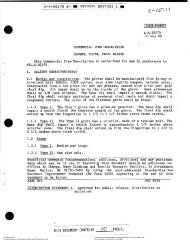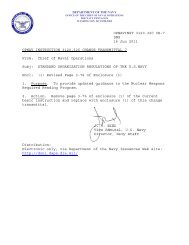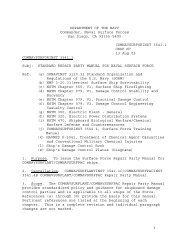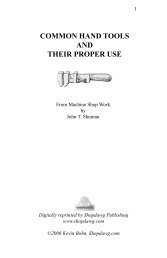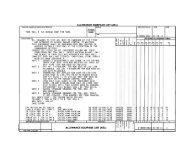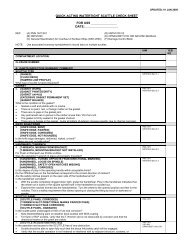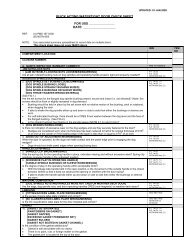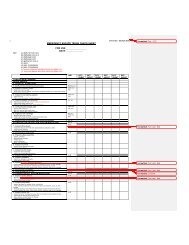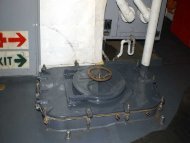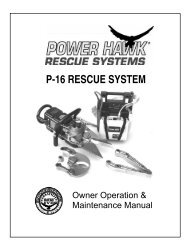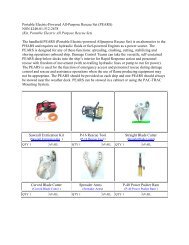JOINT FLEET MAINTENANCE MANUAL
JOINT FLEET MAINTENANCE MANUAL
JOINT FLEET MAINTENANCE MANUAL
Create successful ePaper yourself
Turn your PDF publications into a flip-book with our unique Google optimized e-Paper software.
3.3.14 Light-Off Assessment (Non-Nuclear Powered Ships only).<br />
COMFLTFORCOMINST 4790.3 REV A<br />
a. Light-Off Assessments (LOA) for 1200 psi, 600 psi, Main Propulsion diesel and gas turbine ships will<br />
be conducted before propulsion plant operations at an appropriate time before completion of the fitting<br />
out availability. The ISIC, with the assistance of Afloat Training Group Atlantic/Pacific, will determine<br />
if ship's training procedures and status support safe plant operations, if management programs are<br />
effective, if the propulsion plant is ready for light-off and Ship's Force ability to combat a main space<br />
fire.<br />
b. References (y) and (z) address propulsion plant LOAs administered by the ISIC, with the assistance of<br />
Afloat Training Group Atlantic/Pacific, and recommend that Ship's Force is to have a minimum of two<br />
weeks after completion of industrial activity work in the engineering spaces prior to the LOA.<br />
Experience has shown this two week period is crucial, not only to successful completion of the LOA<br />
but to the operation of the ship subsequent to construction. If it appears the two week interval is in<br />
jeopardy, the ship's OIC should discuss ways to speed up the industrial activity work with the Ship<br />
Superintendent or this subject should be addressed at Supervising Authority progress conferences.<br />
c. Completion of industrial activity work should be interpreted as meaning that all known work and testing<br />
authorized for accomplishment by other than Ship's Force, and which is necessary to support LOA, is<br />
complete, including the removal of associated staging and equipment, reinstallation of access doors and<br />
hatches, cleanup and painting. Fuel, lube oil, and feedwater should be on board. Partial or temporary<br />
installations do not meet completion criteria except as necessary to support the LOA itself or, in the<br />
case of lagging pads, as necessary to allow readjustment upon light-off to hot settings of regulators,<br />
reducers, and relief valves. The systems and spaces involved in LOA vary from ship to ship, but<br />
normally include all systems and spaces needed to support the plant(s) being inspected. This would<br />
include main and auxiliary machinery spaces, switchboards, diesels, shaft alleys, uptakes, repair<br />
lockers, oil laboratories and calibration laboratories for Automatic Boiler Control systems, etc.<br />
Confirm spaces subject to inspection with the Propulsion Examining Board.<br />
d. Emergent work items or additional discrepancies requiring industrial activity work that become<br />
apparent during the pre-LOA period need to be accommodated. Normally these requirements can be<br />
worked during night shifts or inclusive weekends. However, any industrial activity work during this<br />
period will be permitted only with the consent of the Supervising Authority and the OIC.<br />
e. This Key Event is largely an exercise in attention to detail and coordination at and between all three<br />
levels of maintenance activity (Ship's Force, the Shipbuilder and the Supervising Authority). LOA<br />
preparations should begin months before the availability.<br />
f. First-hand inspections of main and auxiliary machinery spaces are most effective when industrial<br />
activity personnel are not on board (weekends and holidays). During these periods, joint inspections by<br />
the Engineer Officer with Leading Petty Officers are recommended for every main space. Similar<br />
inspections of the auxiliary spaces should be conducted by either the CO or the Executive Officer, along<br />
with the Leading Petty Officers of those spaces. Discrepancy lists convert readily to work lists. Night<br />
repair teams (primarily composed of duty section personnel) can work discrepancies when industrial<br />
activity workers are not in the way.<br />
g. The Plan of Action and Milestones for a successful LOA must be written in detail, at the minor<br />
equipment/minor task level, and the more detailed, the better. It is a dynamic document and requires<br />
updating and revision daily as the LOA date approaches.<br />
I-3-9



